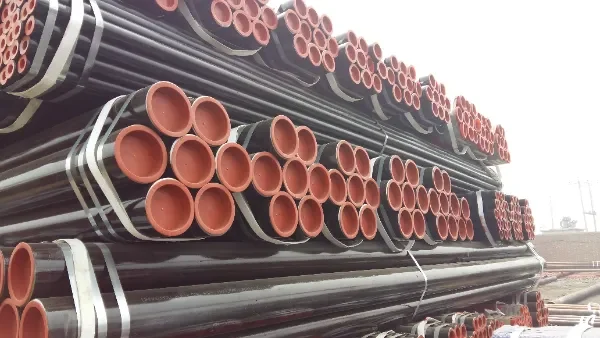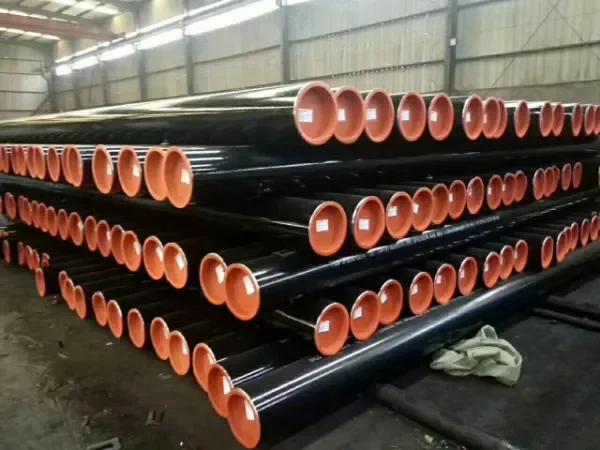Some overview of corrosion problems of oil country tubular
Corrosion condition of oil country tubular
The corrosion of oil casing, gathering and transporting pipelines and storage tanks is mainly caused by the output of oil and gas Wells, shallow water and injection fluid, etc. The main media are H2S, CO2, dissolved oxygen and SRB, etc. Drilling tools are often subjected to the action of many media, including drilling fluid, resulting in pitting corrosion fatigue, stress corrosion damage and fracture, such as gravity stretching and rotation.

1.Corrosion characteristics of oil country tubularlines/gathering pipelines
Sulphate-reducing bacteria, carbon dioxide, bicarbonate ions and chloride erodes the produced water, resulting in scale corrosion and wire corrosion. When hydrogen sulfide is present in Wells (especially gas Wells), the damage of oil pipe is dangerous. The main causes of corrosion damage are hydrogen embrittlement HIC and SSCC.oil country tubular is in a complex stress state under the action of dead weight, external pressure and other factors, and tensile stress is an important factor promoting the damage of metal protective film and matrix corrosion.oil country tubular and gathering pipeline still have scale, when Sr2+, Ba2+ scale can not be cleaned by conventional pickling method, seriously affect the normal production. There are paraffin formation inoil country tubular and gathering pipeline, and the high frequency of paraffin removal seriously affects the normal production. Erosion corrosion of oil country tubular and gathering pipeline is also a common form of corrosion failure, such as erosion, cavitation and so on. Anoil country tubular inner wall corrosion form (CO2 corrosion) typical uniform internal corrosion typical corrosion perforation.
2.Corrosion characteristics of drill pipe
The main failure modes are excessive deformation, puncture or fracture and surface damage. Excessive deformation is caused by working stress exceeding the yield limit of the material. The failure of drill string is mainly caused by stress corrosion, fatigue and corrosion fatigue. Surface damage mainly includes corrosion, wear and mechanical damage. Seventy percent of accidents are caused by punctures or fractures in the thickening transition zone inside the drill pipe. A prerequisite for puncture is the existence of a crack. The corrosion of the outer wall of drill pipe is light and uniform, while the corrosion of the inner surface of drill pipe is very uneven. The corrosion of the junction between the inner thickening transition zone and the pipe body is serious, and there are many pitting pits, and the cracks originate from the bottom of these pitting pits. Inner coating is the main solution to solve the corrosion fatigue failure of drill pipe.
3.Corrosion characteristics of casing
The corrosion of casing is mainly caused by sulphate-reducing bacteria in produced water (formation water) and erosion of CO2, bicarbonate ions and chloride. The corrosion of the screw is serious, mainly due to the comprehensive action of bacterial corrosion, gap corrosion and stress corrosion. Periodic friction accelerates the corrosion and perforation of the casing, which is characterized by directivity. Poor cement quality results in the loss of casing cement protection.
4.External corrosion of oil country tubular during storage and transportation
Oil well pipe in the process of storage and transportation; Corrosion forms: atmospheric corrosion (O2 corrosion), corrosion under scale (protective layer failure, hot rolled oxide scale and other surface attachment of local oxygen concentration battery formation), salt fog (shipping process), acid fog corrosion (typical chongqing); It should be paid attention to by manufacturers (long-acting anti-corrosion coating, shipping for export, appearance quality) and users (protective measures should be taken for storage and transportation). External protective coating requirements: good water resistance (7d); Good salt spray resistance (grade 1~2); Good weather resistance (no discoloration in various environments); Good adhesion (Grade 1); Good impact resistance (3J).
Basic measures for oil country tubular anticorrosion
1.Follow the standard design and selection of materials. Different materials and steel grades are selected for different service environments. High alloy pipe such as stainless steel pipe is also used in corrosive environment (cost is more than 4 times of carbon steel), but stainless steel pipe also has Cl- pitting corrosion problem.
2.Appropriate and effective protective coating shall be adopted. Such as anti-corrosion coating and metal coating protection technology;
3.Adopt other auxiliary means, such as adding corrosion inhibitor and closed water injection system, to reduce the dissolved amount of O2, CO2 and H2S; Use a sulfate reducing bactericide.
4.Cathodic protection is adopted to establish corrosion monitoring system to grasp the corrosion dynamics and prevent it from happening.
Performance requirements of coating for oil country tubular
Oil well pipe anti-corrosion is essentially a shielding barrier. It is to block the contact between H2S, CL-, CO2 and acid compounds dissolved in water and pipe body. Specific requirements are: coating surface smooth, no defects and good adhesion; Has a certain temperature resistance; Good barrier to corrosive medium in the environment; The chemical properties of coating materials are stable; It has reliable mechanical properties.







